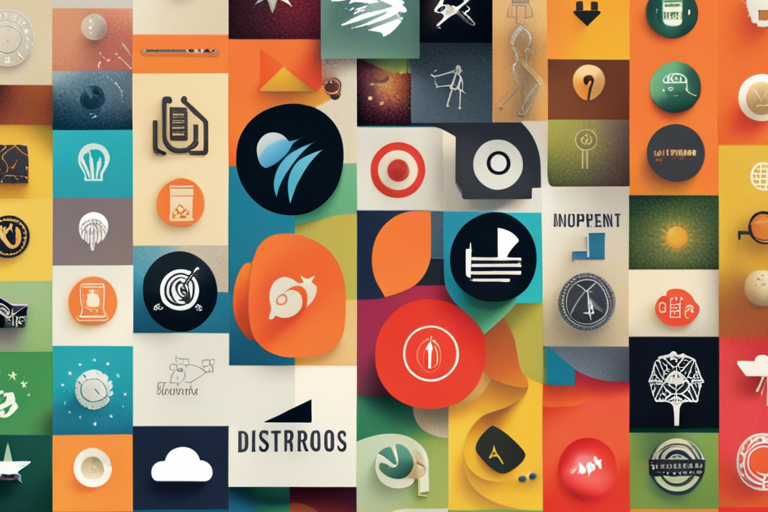Unleashing Creativity with Autonomous Distros
The allure of autonomous Linux distributions is on the rise, attracting a cohort of developers and users seeking liberation from the limitations inherent in mainstream base Linux distributions. My journey, spanning over two decades and involving the exploration and critique of a myriad of open-source platforms, has cultivated a particular affinity for these uniquely crafted, independent distros.
In this realm, the likes of Carbon and Blend Linux have emerged as intriguing entities, each embodying a distinctive ethos reflective of their creators’ ingenuity. These creations diverge from the conventional paths charted by well-established players, unearthing avenues for innovation and customization.
I’ve ventured into the realms of Linux crafted by corporate entities, expansive volunteer collectives, and solo developers alike. It is within this tapestry that independent creations, unfettered by affiliations, often shine the brightest. Distinctive offerings like PCLinuxOS, Tiny Core Linux, and the iconic Puppy Linux, among others, epitomize this category’s ingenuity.
BlendOS captivates with its amalgamation of diverse software elements, offering users the luxury of choice between the Gnome and KDE desktops. In contrast, CarbonOS, unanchored by legacy code, harnesses the Gnome environment, complemented by a resilient upgrade and maintenance ecosystem.
A Trend Emerges
Recent insights unveiled a subtle yet significant shift in developers and users’ affiliations, drawing attention to an intriguing dynamic. A study by Evans Data delineated a preference among software developers for non-commercial Linux iterations, distinguished by their community-driven development and distribution sans financial requisites.
Commercial Linux variants, characterized by user support fees and occasionally bundled with proprietary applications, contrast starkly with their community-driven counterparts, which thrive on volunteerism and are disseminated freely.
The Independent Third Path
Yet, amidst this dichotomy, an emerging category of independent Linux distributions is carving out its niche. These are creations unbound by the foundational code of prominent Linux projects, blossoming in the liberty to innovate and customize.
The “from the ground up” characterization aptly encapsulates the essence of these distros, crafted with tailored toolsets, coding libraries, and bespoke software packages. They stand unencumbered by the coding frameworks of notable names like Ubuntu, Fedora, or Arch Linux.
The Evans Data insight unveiled a telling narrative; a fifth of developers perceived no tangible advantage in commercial Linux variants over their non-commercial counterparts. The allure of the latter was rooted in user-friendliness, coupled with cost-effective maintenance and upgrade pathways.
The Liberty to Innovate
The allure of independent distros lies in the liberty they confer upon developers to remodel existing codes, tailoring creations to specific user needs and aesthetic preferences. They embody a harmonious blend of the commercial and non-commercial, offering a tailored, cost-effective, and innovative user experience.
As the landscape of Linux continues to evolve, these independent, autonomous distributions stand as testaments to the inexhaustible innovation that defines the open-source ecosystem. Every iteration, every uniquely crafted distro, adds a distinct hue to this diverse tapestry, propelling the continuous evolution of an ecosystem unbound by convention.
A Closer Look at Two Emerging Linux Projects
Diving deep into the world of independent Linux, two projects stand out: BlendOS and CarbonOS, each carved with distinct trajectories and catering to a diverse user base.
Inside BlendOS
BlendOS, crafted by the young yet adept developer Rudra Saraswat, is a mature project with its version 2, “Avial,” unveiled to the public on April 22. It is characterized by its eclectic mix of features and functionalities, drawing from various computing paradigms. Notably, it has broadened its horizons to include Arch Linux software directly installed from both system and community AUR repositories.
Saraswat, a self-proclaimed tech enthusiast, boasts credentials as an official Ubuntu Linux member and the brains behind Ubuntu Unity. Despite his young age, his creations echo a level of sophistication and innovation, beckoning both newbie and experienced Linux users alike.
The newest iteration of BlendOS accentuates its versatility, showcasing applications and binaries from diverse distributions, seamlessly integrated into the base system. A novel priority system ensures harmony and prevents conflicts, offering users the autonomy to prioritize their preferred apps and binaries.
A Melange of Features
BlendOS isn’t just limited to traditional Linux offerings but extends its embrace to Android applications, courtesy of the Waydroid installation. It offers a fluid experience akin to the Android app support in Chromebooks but sidesteps the Google Play Store, leaning towards the Aurora Store and F-Droid instead.
The distro ensures Android apps are not alienated but integrated as native, windowed Linux applications. This feature is a boon for Android developers, affording them the luxury of testing their creations sans the encumbrance of a hefty Android emulator.
Furthermore, BlendOS opens its doors to web apps and Progressive Web Apps (PWAs), treating them as native desktop entities. The distro’s flexibility is underscored by its rollback feature, allowing users a safe passage back to previous snapshots in case of mishaps.
Though rooted in Arch Linux, BlendOS carves its own identity, promising a buffet of applications from an array of supported Linux distros and operating systems – a continuous endeavor.
CarbonOS in Focus
Meanwhile, CarbonOS, though nascent, holds promise. Spearheaded by Adrian Vovk, it’s a budding project still in its embryonic stages, yet it heralds a vision of a secure and intuitive user experience.
The Early Glimpses
This fledgling OS, though not yet primed for the mainstream, seasoned, or novice users, emanates potential. Its infancy is marked by exploration and development, yet its trajectory is anchored in user security and seamless interaction.
A Closer Look at CarbonOS
CarbonOS boasts a sleek and streamlined design, characterized by its intrinsic simplicity and intuitive user interface. At its core, a comprehensive system-wide file-searching mechanism and an integrated control center enable users to accomplish tasks with ease, bypassing the need to juggle multiple applications.
Hassle-Free Updates
Echoing the efficiency of BlendOS, CarbonOS promises a smooth and error-free updating process. Updates are discreetly carried out in the background, with a reboot sufficing to implement all changes. In the event of an unforeseen issue, CarbonOS is equipped to automatically revert the problematic updates, a feature users can also initiate manually, ensuring system stability is never jeopardized.
Fortified Security
Distinct from many of its counterparts, CarbonOS introduces a fortified layer of security, rendering system files read-only to ward off potential threats. Installed applications benefit from an additional layer of security, operating within isolated sandboxes that enhance the system’s defense mechanisms.
The OSTree Edge
Adrian Vovk accentuates the integration of OSTree in CarbonOS, a feature that distinguishes it alongside Endless OS and Fedora Silverblue. OSTree facilitates the versioning updates of Linux-based operating systems, operating seamlessly in user space atop any Linux file system.
Decoding OSTree
In the realm of CarbonOS, the operating system is housed within a git repository, with the /usr directory designated as read-only. System state is confined to /home, /var, and /etc directories – purging these restores the system to its pristine state.
The rollback mechanism is straightforward, akin to the efficiency observed in Chromebook upgrades. Updates are compact, necessitating only the download of binary differences from the antecedent version of CarbonOS, thus eliminating the cumbersome full-package downloads.
A Vision of Streamlined Efficiency
Vovk envisions a CarbonOS devoid of the intricate complexities inherent in conventional Linux systems. The distro is fine-tuned for effortless hardware management, seamless operation of Flatpak apps, and offers a user experience unmarred by obtrusive elements.
Early Stages of Innovation
Currently in its alpha stage, CarbonOS is open for exploration and testing, yet its full array of features will be unveiled as the development progresses. It stands as a Linux distro to watch, heralding an era of simplified, efficient, and secure Linux computing experiences.




Leave a Reply